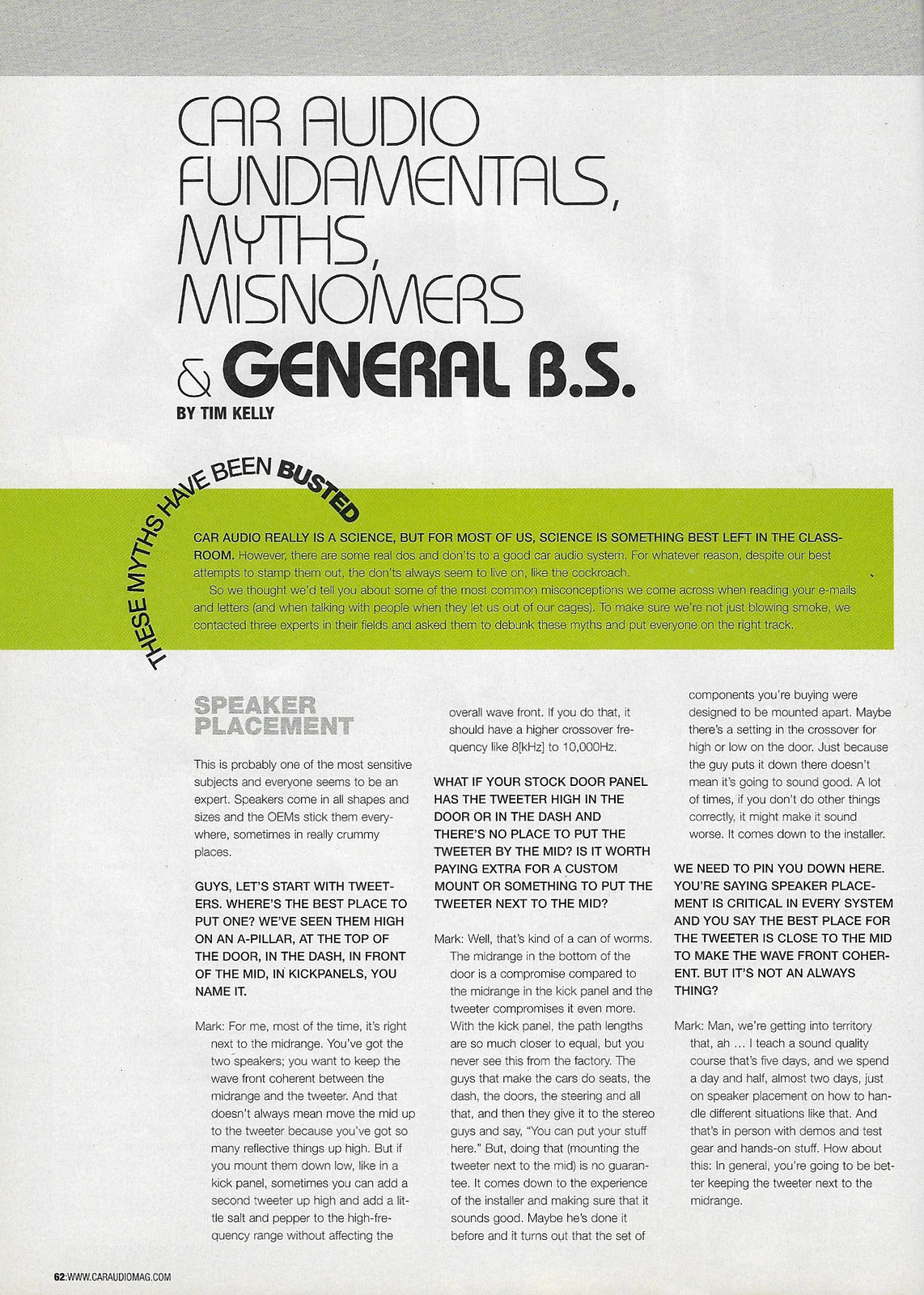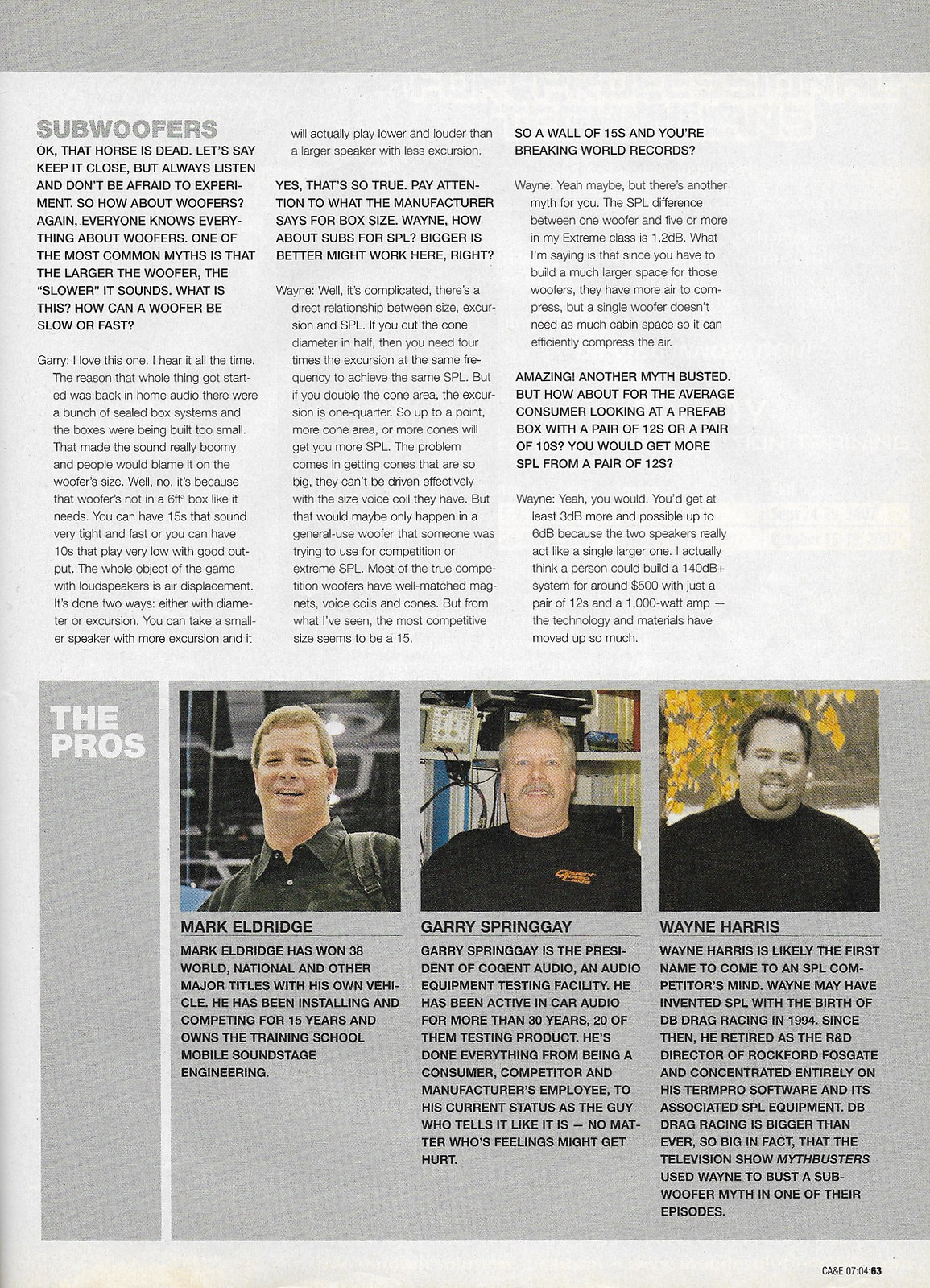
Originally Posted by
diy.phil

The coaxial speaker will be nice for time alignment and imaging. But one issue is sound in a midrange speaker originates from the voice coil's circle/area and not the outside cone/paper/surround area. We can verify this by holding a tube closely to the center/voice-coil and the other end on our ear (empty kitchen towel tube will work). If we put a large tweeter on a post/pole in the middle ("coaxial speaker arrangement") it will kind of block or color the sound from the midrange... so, some separate/component speakers are more desirable.









 Reply With Quote
Reply With Quote
